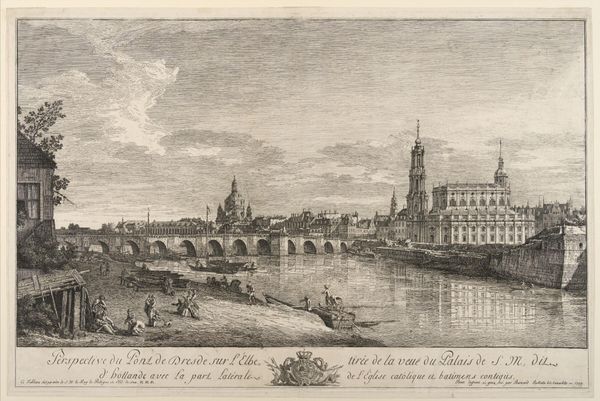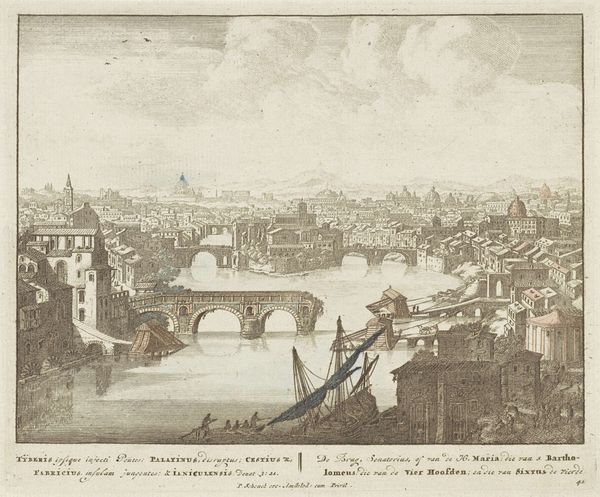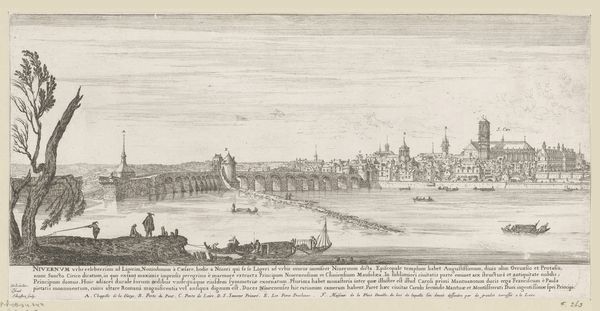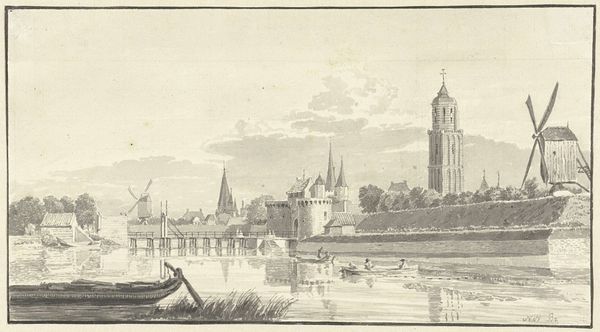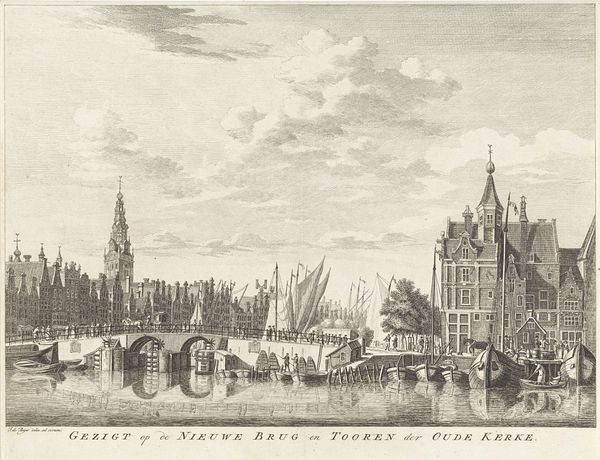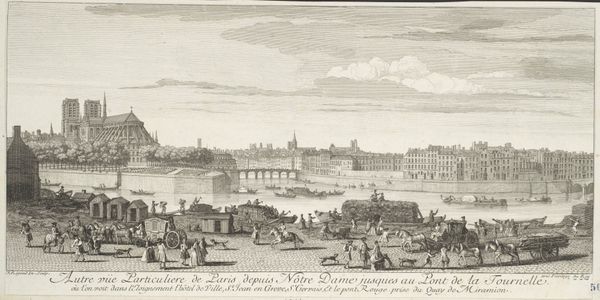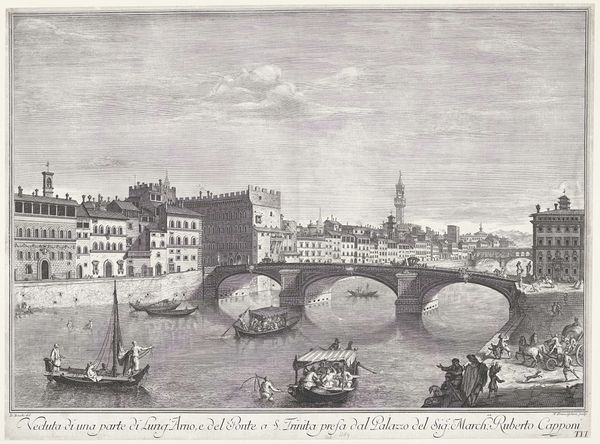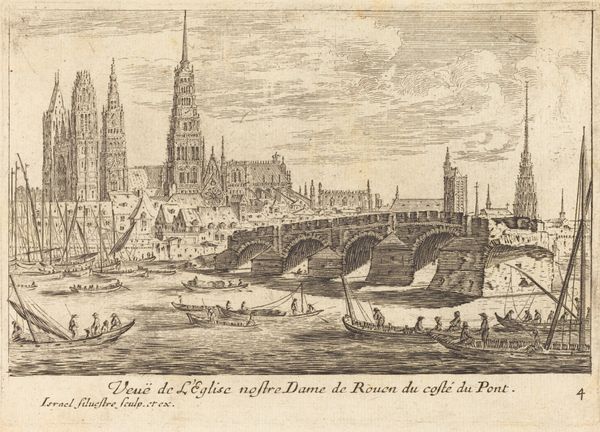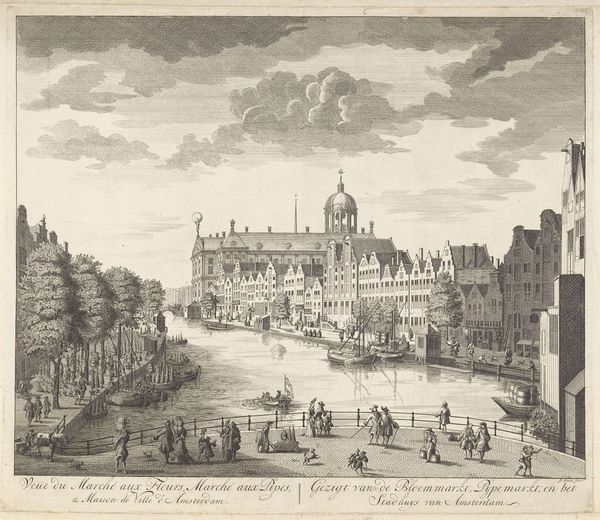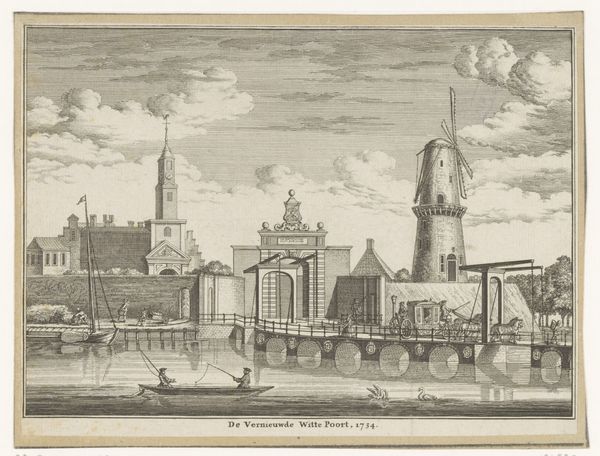
Dimensions: height 540 mm, width 830 mm
Copyright: Rijks Museum: Open Domain
Editor: Here we have Bernardo Bellotto's etching, "Augustusbrücke over de Elbe te Dresden," from 1748. It’s a remarkably detailed cityscape. There's almost a photographic quality to the precision of the buildings, yet the figures seem looser, more dynamic. What do you see in this piece, particularly in its historical context? Curator: Well, beyond the immediate impression of a baroque city, I see a deliberate construction of power and visibility. Bellotto, nephew and pupil of Canaletto, understood how cityscapes could serve as political tools. The Augustus Bridge wasn't just infrastructure; it was a symbol of Augustus the Strong's reign, projecting authority through urban development. The meticulous rendering isn't merely aesthetic, it's strategic. Consider who would commission and consume such an image – what sort of power dynamic do you observe here? Editor: So the intended audience was important, probably upper-class people who were the patrons. I'm struck by the way the architecture seems almost staged, as if arranged for maximum impact. Curator: Precisely. It’s a performance of order and prosperity. Notice how Bellotto carefully positions the viewer, elevating the gaze. We're given a curated panorama that reinforces the narrative of a thriving, well-governed city. Also, the figures at the bottom in action make the viewer feel as though they are viewing an industrious populace from on high. What about the role of etching as a medium itself – does that influence its public role at the time? Editor: I never considered that. Because etchings are reproducible, I assume the picture reached a broader audience than, say, an oil painting would have. This gave the government the ability to shape how more people saw them. Curator: Exactly. Dissemination was key. By understanding the politics of imagery, we gain insight into how Baroque rulers legitimized their power through public-facing media. This conversation really emphasized that it’s not just a pretty picture, but a calculated statement. Editor: Definitely, I see how considering its reception reveals the historical, political context behind even seemingly simple landscapes.
Comments
No comments
Be the first to comment and join the conversation on the ultimate creative platform.
